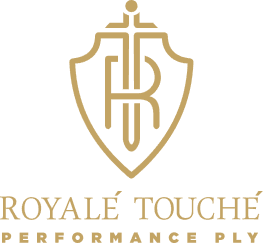
Why is Blockboard Good for Shelves: Top Advantages of Blockboard Shelves

October 30, 2025
Shelving is an important element of organization for homes and offices combining function and fashion. Choosing the material of your shelves is very important, as it will determine durability, strength, and aesthetics of your organization space. Blockboard is one of the many materials available for shelves and has become a very popular option. Why is blockboard good for shelves in particular and what distinguishes it from alternatives made of wood? This article will give you the benefits of blockboard shelves and why you should consider using them for residential and commercial purposes alike.
What is a Blockboard?
Blockboard is a manufactured wood product that consists of gluing strips of solid wood to create the core of the board, and then applying a quality of veneer face and backing top and bottom. This process creates a lightweight and strong panel that combines solid wood durability with engineering cost-effectiveness and flexibility. Unlike plywood, which uses a series of thin layers of sheets, blockboard uses a solid wooden core that provides the panel with significantly less chances of warping or bending. This solid wooden core of the manufacturing process makes it a good option for longer spans and structural applications for given storage units, such as shelves. You can trust using blockboard shelves as stable, as they limit bending and warping, when storing heavy items like books, decor, or kitchen supplies.
Benefits of Blockboard Shelves
As homeowners, interior designers, and office planners think about different materials used for shelves, there is always a question, why is blockboard good for shelves? You can find enough evidence to support the advantages of blockboards in a unique mix of strength, versatility, making things easy!
Strength and Durability
Blockboard is ideal for shelving mainly because of its strength. With a solid core of wood, the blockboard is rigid, and the laminated surface provides strength and durability. A blockboard shelf can hold significant weight without sagging over time; whether these shelves are floating, open racks, or library-style bookcases, blockboards will be sturdy for long-term shelving.
Lightweight and Easy to Handle
Blockboard is much lighter than wood—it is lighter and easier to transport, handle, and install. This is especially important for large shelving units that would use multiple panels. The weight savings of blockboard allows room for less effort in installing your shelving, while maintaining a strong structure for uses in storage. The weight allowance of blockboard, makes it extremely DIY friendly for shelving, modular units, and movable storage.
Smooth and Aesthetic Finish
Blockboard has a smooth uniform surface structure to laminate, paint, or veneer. That allows for characteristic premium finishes while maintaining durability in strength. If you prefer a modern look, woodgrain or even a colorful laminate-finish-- a blockboard shelf will allow for aesthetic design in your shelving unit.
Value
Blockboard is less costly than solid wood, but it can offer comparable strength and aesthetic beauty. Its manufactured design minimizes materials waste, making it a budget-friendly choice for designers and homeowners. Blockboard shelves provide good value, offering durability, appearance, and cost together in one product.
Resistant to Warping
Compared to natural solid wood, which can warp and bow as a result of humidity and temperature, blockboards won’t lose its form at all. The core strips are glued together under pressure and the laminated surface gives it additional structure. The fact that they will not deform is one of the benefits of blockboard shelves when we consider where they would be located, such as in humid areas - kitchens, bathrooms, by the water, or at the beach.
Flexible
Blockboard has a significant amount of versatility thanks to the engineered structure. The blockboard can be cut/drilled and shaped to fit; it will not crack or splinter to surprise anyone wanting to use different types of shelving solutions. Whether you are looking to use floating shelving, built in shelving, corner shelving, and/or modular storage there is a flexibility that blockboard provides to suit specific designs in your home or office. The flexibility of design is yet another reason why designers ask: why is blockboard good for shelves – it supports decorative shelving for the design-minded, while also providing functional shelving solutions.
Environmentally-friendly
The majority of blockboard will include sustainable wood strips and low VOC (volatile organic compound) adhesives, making them a much better option for the environment than solid wood. For those who are concerned about materials in the indoor environment, you can even find blockboard shelves with E0 or low-emission adhesives to support a safer home environment.
Favourite Uses for Blockboard Shelves
The versatility of blockboard when looking for a shelf, shelf storage, or shelving solutions provides a durable structure for many different activities:
Bookshelves
Blockboard provides plenty of strength to store heavy books and decorative items without bowing or sagging.
Kitchen Shelves
Blockboard is resistant to everyday life and will support cookware, utensils, and/or food storage without stressing the strain of weight.
Office Storage
Blockboard shelves provide a lightweight but durable option for cabinetry, open racks, and modular shelving units.
Decorative Shelves
Blockboard offers the ability to customize shelves in a variety of designs from wall floating shelves to simple display units without losing the durability.
These examples are why we see so many professionals use blockboards when they want to create long-lasting, durable shelving solutions.
Maintenance and Longevity
Blockboard shelves require minimal to no maintenance. The laminated surface is easy to clean with just a cloth and some water, and once in a while, your finish will retain and pop if you polish it. Blockboard does not absorb water, so there is little to no expansion, bowing, or cracking, as you will find with a would-be particleboard or MDF shelf when exposed to various conditions. Block boarding is one of the main reasons it is marketed as long-lasting. Its durability and lack of maintenance are some of the reasons why homeowners ask: why is blockboard good for shelves, and in the lap of luxury, blockboard is definitely worth it.
Conclusion
Blockboard is a practical, reasonably versatile, and aesthetically attractive option for many shelving solutions. Blockboard offers strength, lightweight handling qualities, a smooth finish, and is reasonably priced to produce shelving that ultimately will last for a long time. They are not prone to warping in the first few years after installation, and their design flexibility can only add to the appeal of using blockboards in your office or home. If you are after shelving that offers value, quality, reliability, and grace, blockboard is the material you will want to explore. Understanding why blockboards are good for shelves will allow you to make reasonable and sound choices when considering designs for practicality, stunning use of space, durability, and visual appeal in any home or workspace.
Related Blogs
The Process of Manufacturing Blockboard
Major Differences Between Blockboard and MDF
Pine Block Board: A Versatile Material for Interior Design
What are the Major Differences between Block board and Plywood
Understanding the Differences Between Pine Blockboard and Other Blockboards
Difference Between Calibrated Hardwood Blockboard and Regular Blockboard
